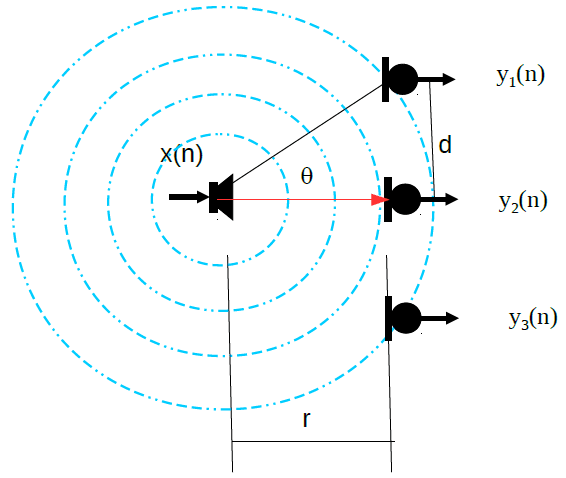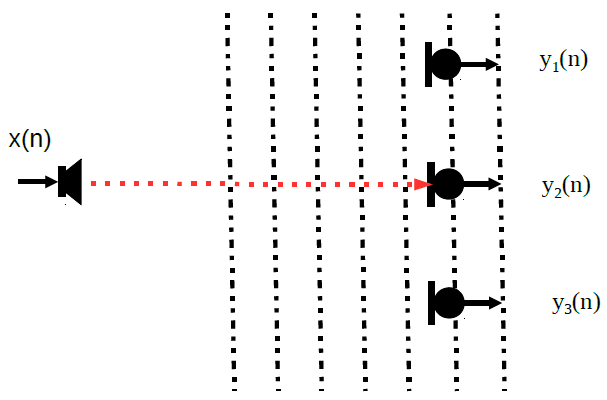Beamforming is a standard signal processing algorithm for acoustic microphone array technology. The approach is based on the simple physics that a sound wave, traveling from the source to a sink. In our case, the sink is a microphone array which carries time information as well as spatial information of the sound source itself. This information can be extracted and utilized to enhance the target sound source or to suppress the unwanted interfering sources.
The sound wave travels in free space in expanding spheres in constant rate. The following diagram shows the process in two dimensions.

From the source to the microphone array, the sound wave decays inversely proportional to the distance it travels and also reaches each component microphone at different time. From the relative delay and power differences of the received sound, we can derive the angle location of the sound source. The above model is often referred to as the spherical model or near field model.
When the distance from the microphone array to the sound source is much larger than the size of the microphone array, we can make the following approximations without too much deviation from the truth.
• The received power is the same on each component microphone of the array
• the sound wave front travels in parallel planes perpendicular to the travel direction in the vicinity of the microphone array.
With the above two approximations, the diagram can be redraw as below for the sound field around the microphone array.

The sound wave becomes planar instead of spherical. This is often referred to as far-field model. The far field model can greatly simplify the mathematics for beamforming without losing too much on accuracy.